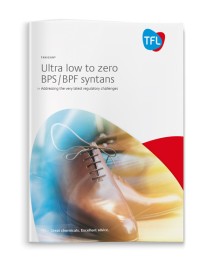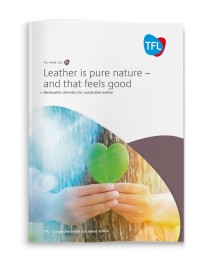Adjusting the pickle to ensure its uniform penetration is a matter of judicious adjustment with generic masking salts, or with TFL specialties, where their properties are judged beneficial. With certain auxiliaries, a pickle free of salt can be achieved.
WARNING: Pickling and chrome tanning processes can release highly toxic hydrogen sulphide gas. The appropriate respiratory protective equipment must be worn when opening vessels or checking pelts.
The pickling process prepares the pelt for the chrome tannage or is used as a form of long term preservation particularly for sheep skins pelts which are traded around the world in the pickled condition.
In the most simple form pickling consists of the treating the skins or hides with salt (sodium chloride) and an acid, usually sulphuric acid.
To help penetration of the pickle and to provide a masking effect to aid chrome penetration, it is common to add organic acids or their salts, the most common being formic acid or sodium formate.
Lime fleshed hides or skins delime more easily and if the delime process is optimised the pickling will in turn be more easily accomplished.
Pickling agent, SELLATAN P, enables low salt pickling which in combination with a wet-white tannage using SELLATAN WL-G or CFX new provides a environmentally sound process for chrome free leathers.
Processes
Industries
- Garment
- Upholstery
- Automotive
- Shoe





 Main Reaction - The TFL Blog Stories, incidents, tips and facts around the topics leather, chemistry, fashion, sustainability and ecology. Our editorial staff consisting of experienced tanners, scientists, market experts, fashion and communication specialists has sharped their pencils and will supply you with fresh and inspiring content on a regular basis.
Main Reaction - The TFL Blog Stories, incidents, tips and facts around the topics leather, chemistry, fashion, sustainability and ecology. Our editorial staff consisting of experienced tanners, scientists, market experts, fashion and communication specialists has sharped their pencils and will supply you with fresh and inspiring content on a regular basis.


 LEVOTAN® / LUBRITAN™ - Looking for higher performance? Tanners around the world are facing increasing challenges from their customers, for example, demands for higher performance such as fastness to light and heat resistance, but also lighter weight leather and more recently odour / emissions avoidance.
LEVOTAN® / LUBRITAN™ - Looking for higher performance? Tanners around the world are facing increasing challenges from their customers, for example, demands for higher performance such as fastness to light and heat resistance, but also lighter weight leather and more recently odour / emissions avoidance.









